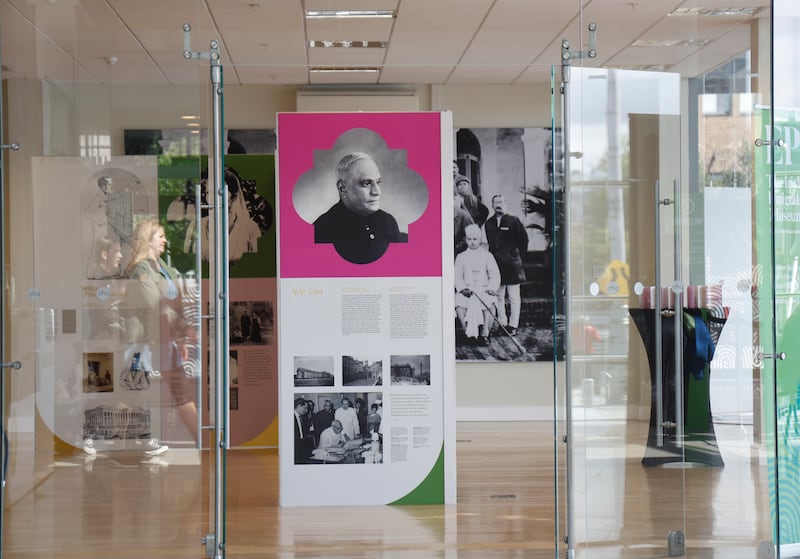Shared histories of migration are being examined at the Irish Emigration Museum (Epic) as part of a multimedia exhibition marking 75 years of diplomatic relations between Ireland and India.
Looking East draws on colonial experiences and highlights the mutual struggles of the countries as they gained independence.
“When we think of Irish immigration, we imagine men and women who went to North America, Britain or Australia,” said Epic historian-in-residence Catherine Healy. “One of the things that we tried to do at this museum was to highlight the lesser-known stories of Irish migration, and India is an interesting case.
“It is an underexplored history that goes back to the 17th century. We hope that this will resonate with people living here.”
READ MORE
The Indian diaspora is the fastest-growing immigrant community in Ireland, but this migration trend dates to the late-1700s when the first Indian man, Dean Mahomet, came to Ireland. He published the first English-language book written by an Indian while living in Cork. A century later a Muslim scholar, Mir Aulad Ali, was appointed professor of Arabic, Hindustani and Persian at Trinity College Dublin.

The exhibition features imperial connections between India and Ireland. At the time of the East India Company’s rule, Irish civil servants went in large numbers to serve in India, considering it an attractive career path, which eventually helped in Britain’s expansion into Asia. By the late 19th century, Irishmen ran seven of the eight provinces of British India.
The exhibition also displays the stories of Margaret Cousins, an Irish activist born in Co Roscommon in 1878 who fought for women’s rights in India, bringing together women of different castes.
Ms Healy said a number of little-known facts should be of interest to people of both descents, as historically India and Ireland looked up to each other as they struggled for independence.
“An India store in Dublin in the 1930s, run by an Indian man, sold tea among other products that were shipped directly from India,” she said. “The store catered to people who supported the boycott of British goods during the freedom movement.
“Irish republicans campaigned to boycott British goods reflecting upon Indian freedom fighter Mahatma Gandhi’s boycott movement. This shop was one of the several establishments that provided boycott-friendly products, with a portrait of Gandhi at the front window.”
The exhibition recalls how, in the early 19th century, Dublin’s Abbey Theatre hosted the world premiere of a play, The Post Office, written by the Indian poet and writer Rabindranath Tagore.
Irish-Indian ties are also reflected through stories from the time of the 1919 Amritsar Massacre in the province of Punjab, where British general Reginald Dyer ordered a shoot-to-kill policy and more than 74,000 people died.
Ms Healy said Dyer, acting military commander at Amritsar, was born in modern-day Pakistan but was educated in Cork and Dublin. The lieutenant governor of Punjab at the time was a man called Michael O’Dwyer, who was born in Co Tipperary.
“He considered himself an Irish nationalist, but those sympathies did not extend to the Indian cause,” said Ms Healy.
- Sign up for push alerts and have the best news, analysis and comment delivered directly to your phone
- Join The Irish Times on WhatsApp and stay up to date
- Listen to our Inside Politics podcast for the best political chat and analysis










